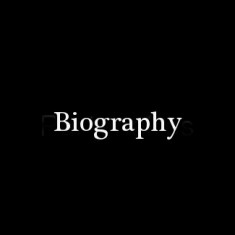Biography
Luc de Heusch
Brussels 7 May 1927 – 7 August 2012.
He studied the hamba-tetela societies of the Belgian Congo from 1952 to 1955, as a researcher at the Institute for Scientific Research in Central Africa. From 1955 to 1992 he taught social and cultural anthropology at the Free University of Brussels (ULB), thereafter becoming professor emeritus. He has written numerous articles and books in his discipline, including five volumes published by Gallimard.
He also has an honorary doctorate from the University of Social Sciences in Strasbourg. In 1966-68 and 1973-75 he was visiting professor at the fifth section (religious science) of the Practical School of Advanced Studies in Paris. While there he also directed the laboratory on belief systems in black Africa, associated with the CNRS. From 1987 to 1991 he was president of the scientific council of the Royal Museum for Central Africa (Tervuren). He is a member of the Royal Belgian Academy for Sciences, Letters and the Arts.
His passion for art has never faltered. From 1949 to 1951 he lived in a community of artists called the Ateliers du Marais alongside the painter Alechinsky, who brought him into the COBRA movement as a writer and film-maker. He subsequently devoted various articles and films to his friends Alechinsky, Dotremont and Reinhoud, as well as to Magritte and Ensor.
He learned the art of filming as assistant to Henri Storck (1947-49) during his final studies at ULB. He is currently President of the Fonds Henri Storck. Long ago, when Storck took him to Paris to assist with the shooting the film Rubens, Professor Georges Smets, who would become the first president of CIFE (see below), told him: “I hope you develop nicely”.
Luc de Heusch made ethnographic and historical films in Africa: Rwanda, tableaux d’une féodalité pastorale (Rwanda, Scenes from a Pastoral Feudalism) (1956), Fête chez les Hamba (Hamba Celebration) (1956, with a new version in 1998), Sur les traces du renard pâle (On the Tracks of the Pale Fox) (1984); Une République devenue folle: Rwanda 1884-94 (A Republic Gone Mad: Rwanda 1884-94) (1996). He is also the author of sociological portraits of Belgium which have their origin in a sort of ethno-fiction: Gestes du repas (Mealtime Gestures) (1958), Les Amis du plaisir (The Friends of Pleasure) (1962), Les Amis du plaisir trente ans après (The Friends of Pleasure Thirty Years On) (1995). He evoked the chaotic history of his country, torn apart by the quarrel between the Flemish and the Walloons, in Quand j’étais Belge (When I Was Belgian) (1999). He also directed the feature film Jeudi on chantera comme dimanche(Thursday We Shall Sing Like Sunday) (1967), shot in the industrial quarter of Liège, where at that time the workers were trapped by the so-called consumer economy.
Alongside his friend Jean Rouch, Luc de Heusch was one of the champions of visual anthropology in his role as deputy secretary general of the CIFE (the International Committee on Ethnographic Film), which became CIFES in 1958 with the addition of the adjective ‘sociological’, at the instigation of Edgar Morin. And it was Morin who wrote the preface for his pioneering study for UNESCO Cinema and social sciences: a survey of ethnographic and sociological film (1962).



